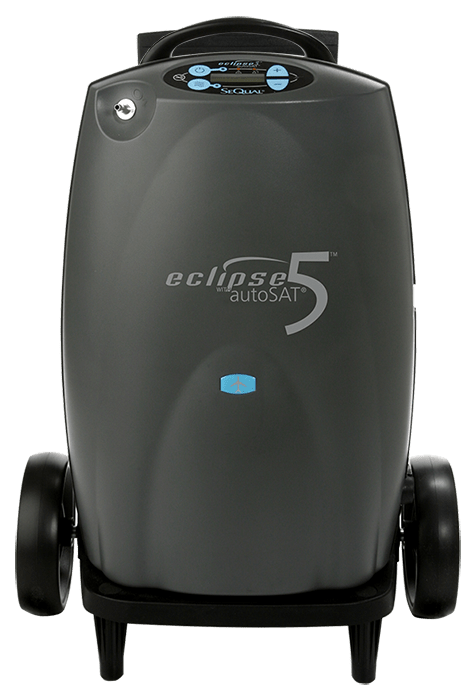
Choosing a new cell phone can feel overwhelming, especially with the vast array of options available today. From high-tech smartphones to simple flip phones, each type of cell phone serves a different purpose, and finding the right one starts with understanding your needs and preferences. Whether you’re looking to stay connected with loved ones, take great photos, or simply make calls and send texts without distractions, there’s a phone out there that fits your lifestyle. In this guide, we’ll break down the main types of cell phones available and help you figure out which one might be the best match for you.
Smartphone
Smartphones (like the iPhone) are the most common type of cell phone today, offering a wide range of functions that go far beyond calling and texting. With internet access, email, GPS navigation, cameras, and downloadable apps, smartphones are essentially pocket-sized computers. They’re designed for people who want to stay connected and productive on the go.
The key features of smartphones include touchscreens, high-resolution displays, front- and rear-facing cameras, and access to a wealth of apps. Many smartphones today also come with advanced features like facial recognition, voice assistants (like Siri or Google Assistant), and compatibility with smartwatches or fitness trackers.
Smartphones offer unmatched convenience and versatility. However, they can be expensive, require regular software updates, and have a steeper learning curve for users who aren’t very tech-savvy. Battery life can also vary depending on how much you use the phone throughout the day. Cell phone plans can also be more expensive for smartphones because of their data usage.
You might consider a smartphone if you enjoy browsing the internet, taking photos, staying active on social media, or using your phone to manage your calendar and emails. Smartphones are great for people who want an all-in-one device and are willing to spend a little extra for the added functionality.
iOS vs. Android: Does it matter?
One of the biggest decisions when choosing a smartphone is whether to go with Apple’s iOS or Google’s Android operating system. iOS is used exclusively on iPhones, while Android powers a variety of phones from brands like Samsung, Google, and Motorola.
iPhones are known for their simple, user-friendly design and strong security. They work well with other Apple products, which can be a plus if you already own an iPad or MacBook. On the other hand, Android phones offer more customization options and come in a wider price range, making them accessible to more users.
Ultimately, the choice between iOS and Android comes down to personal preference. If you’re comfortable with one system, it’s usually easiest to stick with it. However, both platforms offer the core features most users need, like texting, calling, and app access, so you can’t really go wrong with either.
Refurbished smartphone
A refurbished smartphone is a used phone that has been inspected, repaired (if needed), and restored to full working condition before being resold. These phones often come at a significant discount compared to brand-new models and may even include a warranty.
Refurbished smartphones generally offer the same capabilities as their new counterparts, including high-quality displays, internet access, app downloads, and reliable performance, only at a lower price point. Some may show slight signs of wear, but most reputable sellers ensure the phones are thoroughly cleaned and tested.
The biggest advantage of buying a refurbished phone is saving money, which can be especially appealing for budget-conscious shoppers. The downside is that you may not always get the latest model, and warranties are sometimes shorter than those for new devices.
This type of phone is a smart choice if you’re looking for the features of a modern smartphone but want to avoid the high price tag. It’s also ideal for those who don’t need the absolute latest technology but still want a reliable device for everyday use.
Foldable cell phones
Foldable phones are a newer addition to the mobile phone market, combining the functionality of a smartphone with the nostalgia and compactness of older flip-style designs. These types of cell phones feature flexible screens that fold in half, allowing for a larger display when opened and a smaller, more portable profile when closed.
The main appeal of foldable phones is their innovation and versatility. When unfolded, you get a tablet-like experience, perfect for watching videos, multitasking, or browsing the web. When folded, they slip easily into a pocket or purse. They typically include all the features of a high-end smartphone, such as fast processors, advanced cameras, and access to the latest apps.
However, foldable phones are not without drawbacks. They are generally more expensive than traditional smartphones and may be more fragile due to the folding mechanism and flexible screen. Battery life can also be affected by the large dual-screen design.
You might consider a foldable phone if you enjoy the latest technology and want a device that makes a statement. This type of cell phone is best suited for tech enthusiasts or early adopters who appreciate cutting-edge design and don’t mind paying a premium for it.
Feature phones
Feature phones are a broad category of devices that offer basic phone functionality with some but not all the bells and whistles of a smartphone. These phones are designed primarily for calling and texting, though some models may include limited features like a basic camera, FM radio, or simple web access.
Feature phones are ideal for people who prefer simplicity and don’t want to deal with constant notifications, app updates, or complex settings. They usually have physical buttons instead of touchscreens, making them easier to navigate for those who may struggle with touch controls.
Here are a few types of feature cell phones.
Candy bar cell phones
Candy bar phones are named for their rectangular shape and straightforward design. They typically include a number pad, a small screen, and a simple menu system. These phones focus on durability and ease of use, making them a solid option for people who just want a reliable way to make calls and send occasional texts.
Their biggest strengths are long battery life, durability, and low cost. However, they may lack modern features like GPS, apps, and internet browsing capabilities. A candy bar phone is a good option if you value practicality over performance and want a phone that’s easy to carry and operate.
Flip phones
Flip phones, once a staple of mobile communication, have made a comeback in recent years. These types of cell phones fold closed when not in use, which helps protect the keypad and screen and keeps the phone compact. Many modern flip phones now come with basic smart features like texting, calling, and even limited internet access.
The main advantages of flip phones are their compact size, straightforward design, and tactile controls. They’re often easier to use for those with limited dexterity or vision. On the downside, they usually have smaller screens and more limited capabilities compared to smartphones.
Flip phones are a great choice if you prefer voice calls over texting, want a phone that fits easily in a pocket or purse, and don’t need constant access to apps or the internet.
Phones specifically designed with seniors in mind
Some phones are created specifically for older adults, with features tailored to make the user experience more comfortable and accessible. These types of cell phones often have larger buttons, louder speakers, high-contrast screens, and simplified menus. Many also include emergency buttons or health monitoring features.
These senior-focused phones prioritize ease of use and safety. They may lack the power of a smartphone, but they shine when it comes to user-friendly design and practicality. Some models also offer support for hearing aids or have built-in magnification tools.
You might consider one of these phones if ease of use, accessibility, and emergency support are top priorities. They’re especially helpful for people who want to stay in touch with family and friends without navigating the complexities of modern smartphones.
Minimalist cell phones
Minimalist phones are designed for people who want to cut down on screen time and eliminate distractions. These phones usually don’t have access to social media, email, or apps. Instead, they focus on core features like calling, texting, and sometimes navigation.
Their appeal lies in simplicity and intentional living. They’re lightweight, have excellent battery life, and are often used as a “second phone” for weekends or digital detoxes. That said, they aren’t suitable for people who rely on mobile apps or internet browsing throughout the day.
Minimalist phones are a good fit if you want to reduce your digital footprint, stay focused, or use your phone solely for communication and essential functions.
Wrapping it up: Which type of cell phone is right for you?
The right type of cell phone for you depends entirely on your lifestyle, needs, and comfort level with technology. Smartphones are perfect for people who want an all-in-one device for communication, entertainment, and productivity. Refurbished smartphones offer similar capabilities at a lower price point, while foldable phones cater to those who enjoy the latest innovations. Feature phones, including candy bar, flip, senior-friendly, and minimalist models, are excellent choices for those who prefer simplicity, durability, and longer battery life.
Take a moment to think about how you use your phone on a daily basis. Do you check emails, stream videos, or track your steps? Or are you just looking for a way to stay in touch with family and friends? By understanding your habits and preferences, you can find a phone that truly fits your life, not the other way around.
If you’re in the market for a new cell phone and provider, check out our buyer’s guide for how to choose a cell phone plan that best fits your budget and needs.








